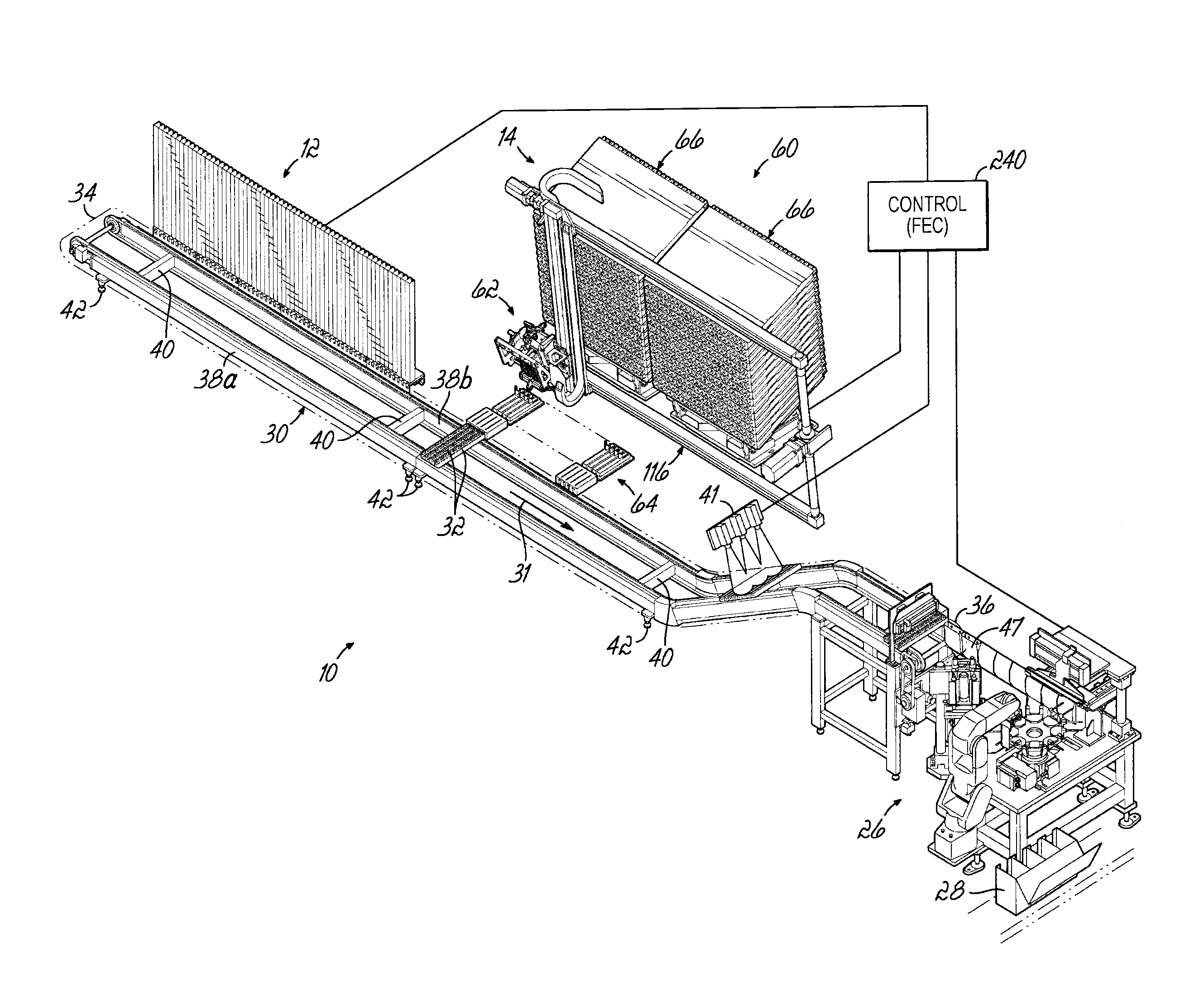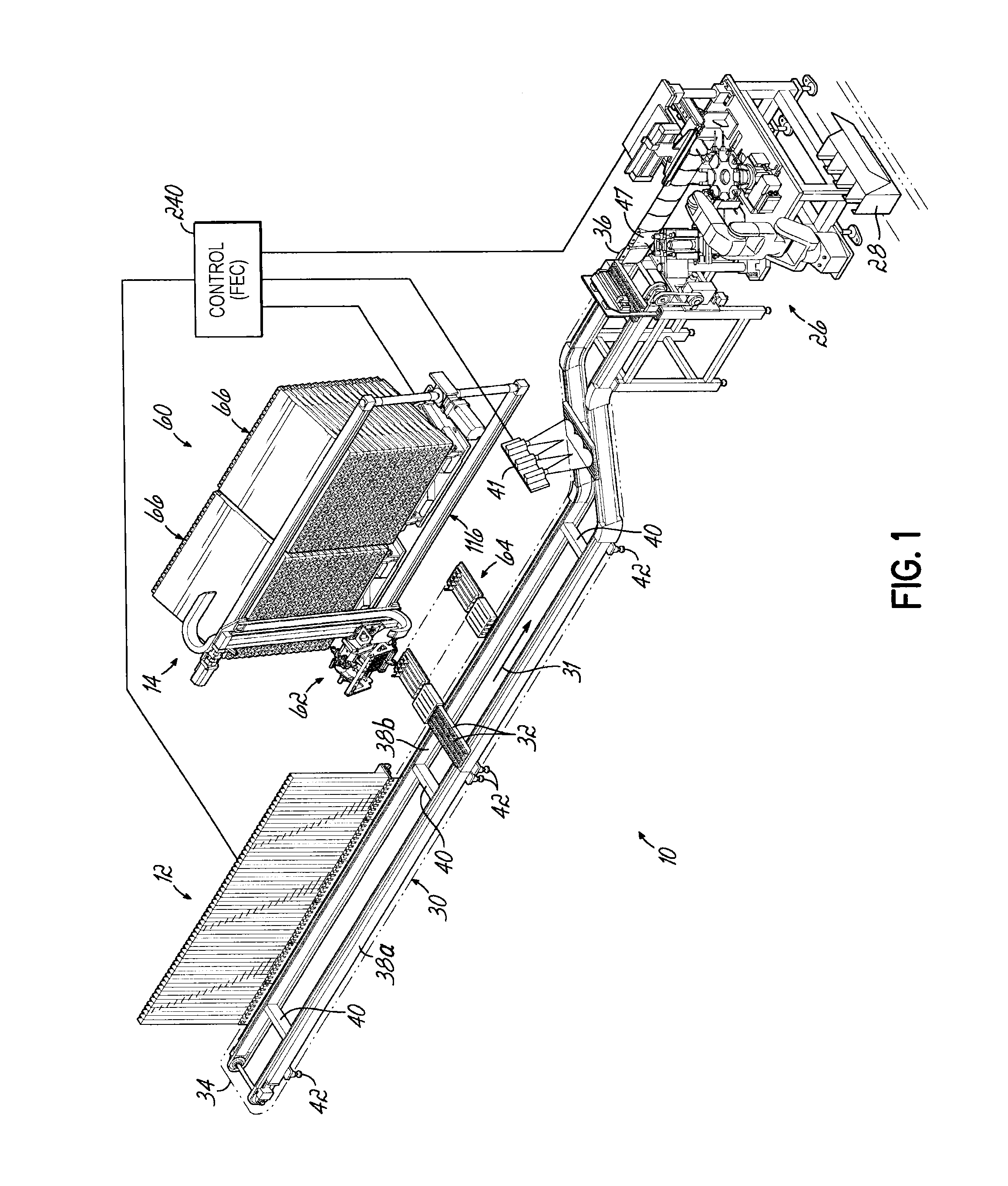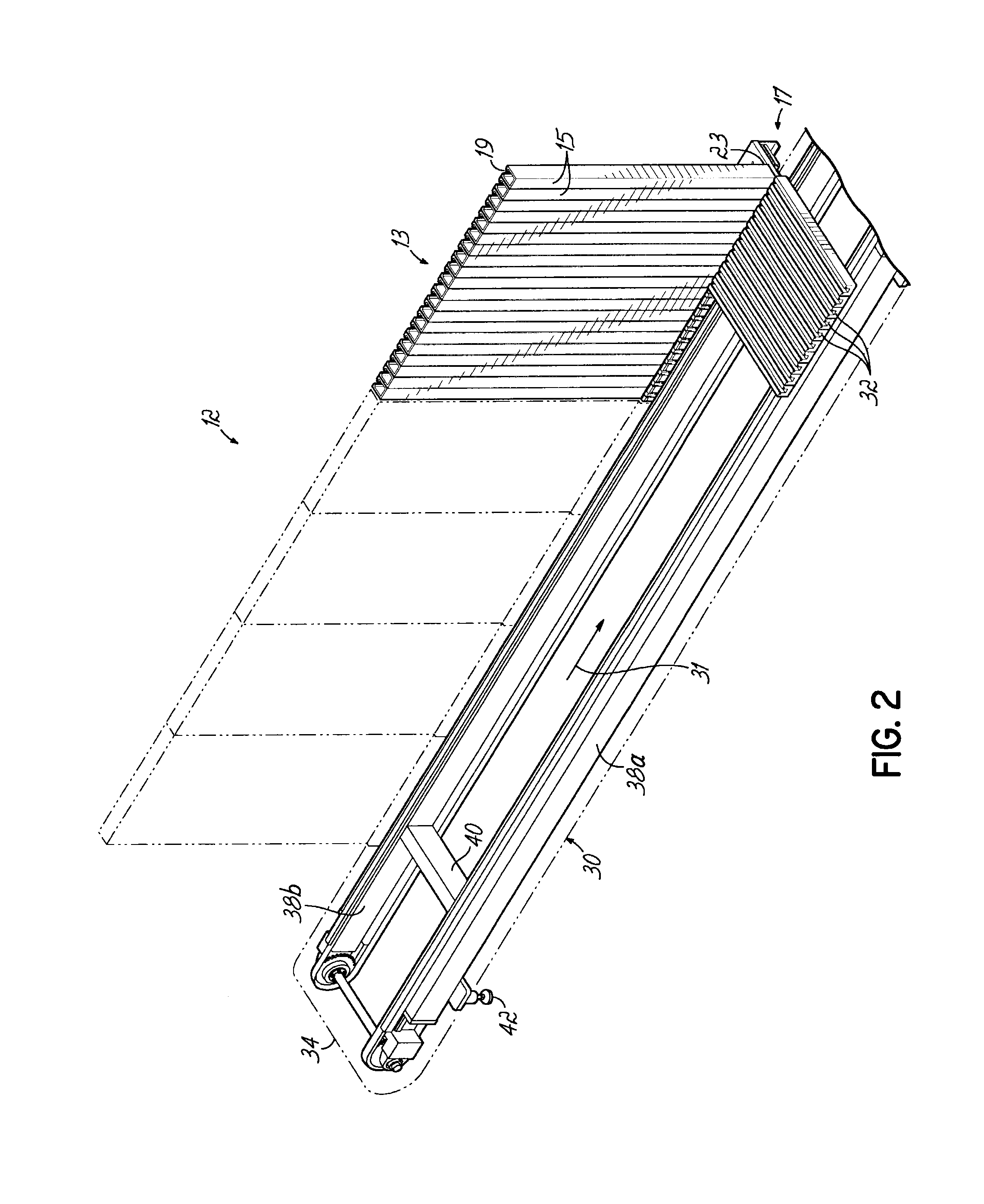Pharmaceutical dispensing system and associated method
a technology of pharmaceutical products and dispensing systems, applied in the direction of instruments, transportation and packaging, de-stacking articles, etc., can solve the problems of inability to cost effectively reuse unused portions of 30-day supply, labor and cost intensive processes, and human error risk, so as to increase labor efficiency, eliminate waste, and increase patient safety
- Summary
- Abstract
- Description
- Claims
- Application Information
AI Technical Summary
Benefits of technology
Problems solved by technology
Method used
Image
Examples
Embodiment Construction
[0043]A dispensing system 10 according to one embodiment is shown in FIG. 1 and is configured to store and dispense individually packaged and labeled doses of medications / supplements, and to assemble the dispensed medications / supplements into individual medication orders, such as time-pass medication orders to be delivered to a long-term care (LTC) facility, for example. It will be appreciated, however, that a dispensing system 10 in accordance with this disclosure may alternatively be configured to dispense other items. The dispensing system 10 is divided into distinct modules that are dedicated to dispensing the medications / supplements based on the demand, or order frequency, of those items. In the embodiment shown, a first module 12 is configured to dispense medications / supplements having a relatively high-demand or order frequency, and a second module 14 of the dispensing system 10 is configured to store and dispense medications / supplements having a relatively lower demand or or...
PUM
 Login to View More
Login to View More Abstract
Description
Claims
Application Information
 Login to View More
Login to View More - R&D
- Intellectual Property
- Life Sciences
- Materials
- Tech Scout
- Unparalleled Data Quality
- Higher Quality Content
- 60% Fewer Hallucinations
Browse by: Latest US Patents, China's latest patents, Technical Efficacy Thesaurus, Application Domain, Technology Topic, Popular Technical Reports.
© 2025 PatSnap. All rights reserved.Legal|Privacy policy|Modern Slavery Act Transparency Statement|Sitemap|About US| Contact US: help@patsnap.com



